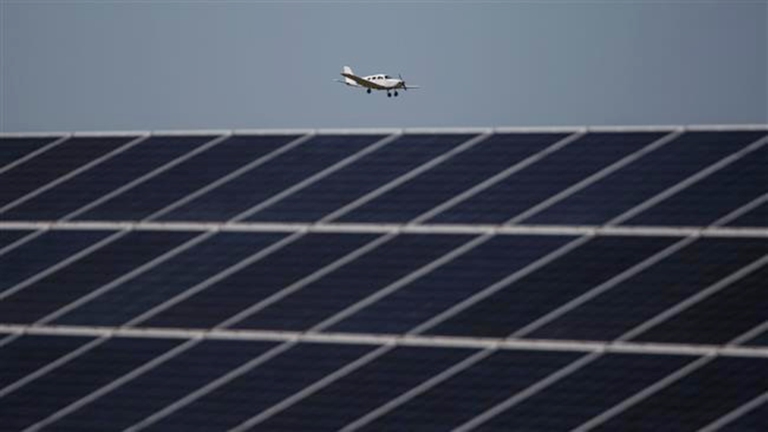
A group of experts in Tokyo suggested pouring radioactive water from Fukushima into the open sea. A marine biochemist explains the consequences of this absurd decision.
George Airport located in the South African town of the same name is the continent’s first eco-friendly airport powered by the sun. All services, from the control tower and escalators to restaurants and cash machines, run thanks to a solar power station nearby. The airport is the second in the world that uses solar energy, following Cochin International
George Airport located in the South African town of the same name is the continent’s first eco-friendly airport powered by the sun. All services, from the control tower and escalators to restaurants and cash machines, run thanks to a solar power station nearby. The airport is the second in the world that uses solar energy, following Cochin International Airport in India.
The regional airport’s 2000 solar panels produce up to 750 kilowatts every day, easily surpassing the 400 kilowatts required to run it, with surplus energy used to supply over 250 local homes. Around 700,000 passengers pass through the facility every year, which has reduced its carbon dioxide emissions by 1,229 tonnes since it started testing the system last year, according to the company’s annual report.
“Sustainability, in terms of our environment, means that we need to be very careful about how we use any form of energy and also other natural resources like water over time,” stated Airport Manager Brenda Vorster.
South Africa is looking to diversify its energy options following a series of major blackouts. In fact, apart from the obvious environmental value of the solar-powered airport, the new system has also solved the problem of frequent power failures. The structure remains off the grid and at night or on rainy days it swaps to the national power grid to compensate.
The operating firm in charge of the project, Airports Company South Africa (ACSA), announced it hopes to achieve carbon neutrality, which means zero carbon emissions, by 2030. It intends to roll out the blueprint for the George Airport project in transport hubs across the country. The weather in George, a town of 150,000 residents, is highly unpredictable and variable, making it the perfect test subject according to the project organisers.
Airport managers are also planning to take the project to a second phase, which includes installing backup batteries that can store solar energy for the night and increasing the capacity of the power station by 250 kilowatts. Other South African airports such as Kimberly and Upington plan to follow George Airport’s green trail in the near future.
Siamo anche su WhatsApp. Segui il canale ufficiale LifeGate per restare aggiornata, aggiornato sulle ultime notizie e sulle nostre attività.
![]()
Quest'opera è distribuita con Licenza Creative Commons Attribuzione - Non commerciale - Non opere derivate 4.0 Internazionale.
A group of experts in Tokyo suggested pouring radioactive water from Fukushima into the open sea. A marine biochemist explains the consequences of this absurd decision.
A federal court in Washington, D.C. has struck down the Dakota Access Pipeline, following years of campaigning by the Standing Rock Sioux tribe.
The Scottish island of Eigg is self-sufficient for its energy needs, relying almost entirely on renewable sources, especially thanks to a coordinated community effort.
President Magufuli in unmovable in going ahead with the Stiegler’s Gorge dam despite conservationists’ warnings of the damage it will cause the Selous Game Reserve’s ecosystem and wildlife.
A large dam along the Luangwa River in Zambia would have posed a serious risk to local people and wildlife, leading hundreds of thousands to oppose it. A call to which the government responded by halting plans to build it.
The first one megawatt solar power plant in the Chernobyl exclusion zone has become operational. This is the first step in a renewable energy development project promoted by the Ukrainian government in the area.
A tanker exploded at a gas and petrol station in Nigeria’s Nasarawa state on the 10th of September, killing 35 people and leaving some burned beyond recognition; 3 citizens had several spine and brain injuries, 2 of them are still on Intesive Care Units. Fela Habila , a local singer, is now stable and out of danger but
The largest tidal power plant in the world will be built in the Larantuka Straits. It will serve 100,000 people and help overcome some of the challenges of energy provision in Indonesia.
Robben Island’s solar energy micro-grid project will produce almost one million kilowatt hours of electricity annually, significantly reducing the cost and impact of buying diesel.










